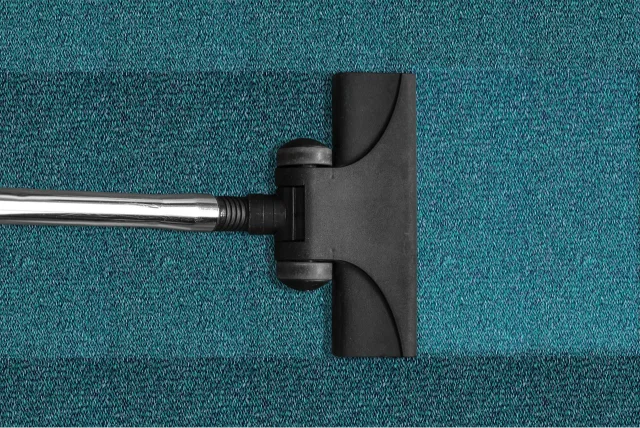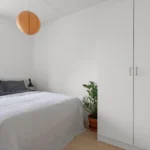Carpet cleaning is an essential task for maintaining a healthy and aesthetically pleasing home environment. Despite the availability of professional services, many homeowners opt for the do-it-yourself (DIY) approach to save money and gain the satisfaction of personal accomplishment. This is what we call becoming a rug doctor. This guide is designed to provide them with a thorough understanding of the DIY carpet cleaning process by detailing practical steps that can be accomplished with common household items and equipment.
Contents
Contents
Understanding the type of carpet and its specific care instructions is crucial before attempting any cleaning (and calling oneself a rug doctor :-). Carpets can be made from various materials, each with different properties and cleaning requirements. The guide will outline the best practices for identifying the carpet material and choosing the appropriate cleaning method. Being informed about the different cleaning solutions, and how they interact with various types of carpets, helps to prevent damage and preserve the carpet’s quality.
The step-by-step process will lead individuals through the entire cleaning procedure, from the initial preparation phase to the final touches that ensure a carpet is not only visually clean but also free from allergens and odors. The guide will highlight the importance of regular maintenance and how it extends the life of carpets. It emphasizes the effectiveness of DIY cleaning when done correctly, offering a reliable resource for those looking to maintain their carpets without professional intervention.
Preparation for DIY Carpet Cleaning
Effective carpet cleaning begins with proper preparation. It involves identifying the carpet type and collecting all the necessary tools and solutions for an efficient cleaning process.
Understanding Your Carpet Type
The first step in DIY carpet cleaning is to identify the type of carpet. Different materials such as nylon, polyester, or wool require specific care. Before proceeding, one should check the carpet manufacturer’s recommendations. Determining whether the carpet is a loop pile or a cut pile will also influence the cleaning method.
Gathering Necessary Equipment and Solutions
Next, one should gather the equipment and cleaning solutions needed for the task:

- Vacuum Cleaner: Ensure you have a vacuum with strong suction to remove surface dust, hair, and soil.
- Steam Cleaner/Carpet Cleaning Machine (if applicable): For a deeper clean, these machines are useful for removing entrenched dirt.
- Carpet Brush: This assists in loosening particles from the carpet fibers.
- Cleaning Solutions: Choose the right cleaning solution for your carpet type; some carpets can be damaged by harsh chemicals, so consider a mild, carpet-safe detergent.
Before starting, clear the area of furniture, ensuring a seamless cleaning experience. Pre-vacuuming is essential to get rid of loose particles and to prepare the carpet for wet cleaning. With the right preparation, DIY carpet cleaning can be as effective as professional cleaning.
Step-by-Step Carpet Cleaning Process
Preparing the Carpet
- Remove furniture: Clear the carpeted area of chairs, tables, and sofas.
- Vacuum thoroughly: Eliminate surface dirt and dust from the entire carpet, including edges and under furniture.
DIY Cleaning Solutions
- Baking Soda and Vinegar: Mix equal parts for a natural stain remover.
- Homemade Shampoo: Combine warm water with a mild detergent for general cleaning.
Check-out the video below for a cool tip on preparing your cleaning solution.
Spot Cleaning
- Apply the stain remover: Blot fresh stains with a homemade vinegar or baking soda solution.
- Let it sit: Allow the mixture to settle on the stain for a few minutes.
Deep Cleaning
- Pre-treat stains: Use a vinegar solution for tougher stains before the overall clean.
- Apply DIY shampoo or a carpet shampoo: Distribute evenly across the carpet.
Scrubbing and Washing
- Gentle scrub: Use a brush on stains, taking care not to damage carpet fibers.
- Rinse with water: Use clean, warm water to remove any residue of cleaning solutions.
There is interesting information here about removing bright color stains from your carpet, check it out.
Drying the Carpet
- Absorb excess water: Press clean towels into the carpet to remove moisture.
- Air-dry: Open windows or use fans to speed up the drying process. Avoid walking on the carpet until it’s completely dry.
Final Touches
- Vacuum again: Once the carpet is dry, vacuum to refresh the carpet’s pile.
- Replace furniture: Carefully return furniture to its original position, preferably with protectors to avoid indentations.
Drying and Post-Cleaning Care
You are almost a rug doctor now!
After thoroughly cleaning the carpet, it’s imperative to ensure proper drying to prevent mold and mildew. Drying time can be accelerated by improving air circulation; opening windows to facilitate airflow aids in this process.
For faster drying:
- Increase air circulation: Use fans or air conditioners.
- Open windows: If weather permits, to allow fresh air to circulate.
A steam-cleaned carpet usually takes about 6 to 12 hours to dry completely. If the carpet is made of wool, one should allow additional time, as wool can retain moisture longer than synthetic fibers.
Drying Tips:
- Do not walk on the carpet until it’s fully dry.
- For pet stains, a second rinse might be necessary to fully remove odors.
Post-cleaning, applying a deodorizer can be beneficial. This might include sprinkling baking soda on the carpet and vacuuming after a few hours. To leave a pleasant scent, one could use a few drops of essential oils during the cleaning process.
Deodorizing with natural substances:
- Baking soda: Sprinkle and let sit, then vacuum.
- Essential oils: Add to the rinse water for a fresh fragrance.
It’s also crucial to protect the carpet backing. Avoid saturating the carpet, as excessive water can damage the backing and the floor underneath.
In summary, following these steps ensures proper care after carpet cleaning and contributes to the longevity and freshness of your carpet.
And here comes the rug doctor! Congrats!
Additional Tips and Maintenance
When addressing stains, one should always test for colorfastness in an inconspicuous small area before applying homemade cleaning solutions or detergents. A mixture of hydrogen peroxide and borax can be effective against germs and bacteria, but proper proportions and handling are crucial.
- Light Treatment: For lighter stains, blotting with a solution of warm water and dish soap may suffice.
- Homemade Solutions: Create mixtures using gentle ingredients such as vinegar or baking soda.
- Bacteria and Germs: Use a sanitizing solution or a steam cleaner to disinfect.
Professional carpet cleaning should be considered periodically. These services can utilize industrial-grade steam cleaners that reach high temperatures, using hot water and suction to remove deeply embedded dirt and wastewater.
- Steam Cleaners: These devices operate by applying hot steam that penetrates carpet fibers, dislodging dirt and debris.
- Dry Cleaning: A method involving minimal water that removes dirt and reduces drying time.
After any wet treatment, one must ensure all excess liquid is removed to prevent mold growth. Using a clean towel, press firmly to absorb moisture.
- Iron: A white cloth and a lukewarm iron can lift some spots after a steam treatment.
- Directions: Always follow manufacturer directions when using cleaning products and equipment.
Regular vacuuming, prompt treatment of spills, and annual professional cleanings will extend the life of your carpet, keeping it fresh and sanitary.
And don’t miss other great ideas from our blog!





